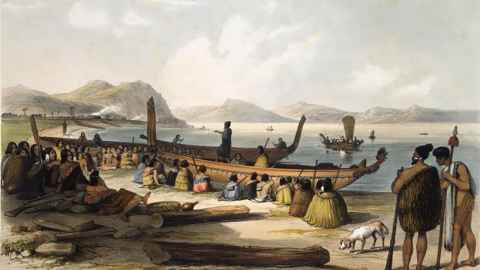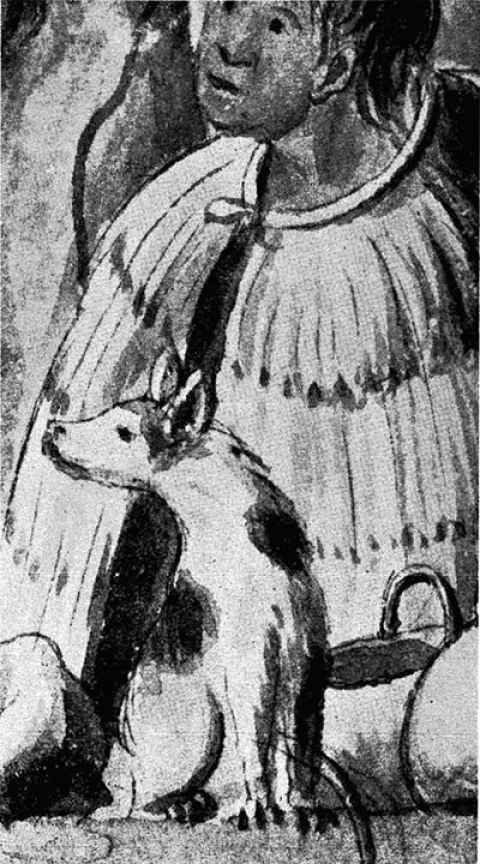A dog's life: the fate of Māori kurī
5 April 2022
The close relationship between humans and dogs in island Polynesia and Aotearoa New Zealand is the focus of new research from the University of Auckland.

In ancient Polynesian societies dogs were companions, cooperative hunters and sometimes competitors, one of only a handful of animals carried across the eastern Pacific from the Cook Islands to the Marquesas, and as far south as Aotearoa.
These now-extinct, smallish Māori dogs (kurī) fascinated Faculty of Arts postgraduate archaeology student Patricia Pillay, who was interested in how they lived in the centuries leading up to the arrival of Pākehā in Aotearoa.
“The loss of moa, followed by the Little Ice Age from the 16th century onward, made life challenging for many Māori communities, so I was keen to find out how kurī fared,” she says.
According to Māori tradition, Kupe the famous Polynesian navigator carried his dog to New Zealand around 650 years ago and as others arrived, they were taken the length of the country, even onto large offshore islands like Ahuahu/Great Mercury, Rangitoto ki te Tonga/D’Urville and Rakiura/Stewart Island.
Patricia says although dogs were highly valued, dog bones and teeth are often uncommon in Pacific Island archaeological sites, suggesting they were kept in small numbers and on some of the region’s smallest islands, they were initially introduced but disappeared over time.
In these cases, they are only known through local traditions or archaeological discoveries, as on some of the smaller Cook Islands.

“This pattern of arrival, followed by local extinction, suggests Polynesian dogs occasionally competed with their owners for food or in other ways, and perhaps were intentionally removed, but in Aotearoa New Zealand however, it’s a different story,” she says.
Patricia consulted with local iwi, the Auckland Museum and archaeologists who care for these collections and received permission to study kurī teeth from archaeological sites found between Northland and the Bay of Plenty.
Her sample of more than 100 dogs represents key periods in Māori history prior to western contact, after which kurī gradually became extinct with the introduction of European breeds.
Each set of teeth held important clues to the individual’s diet and general health. She looked for evidence of cavities (caries) and plaque (dental calculus) as well as tooth wear and fractures.
“Wear is often the result of scavenging in gritty or sandy soils, and broken teeth often come from gnawing and cracking open bones for marrow.”

She also looked for a condition known as ‘linear enamel hypoplasia’ which occurs when the formation of tooth enamel is interrupted; when for example, an individual has a poor diet, disease or a bad infection. This particular focus was the first ever done on kurī teeth.
She found most of the Te Ika-a-Māui/North Island kurī had no evidence of cavities and plaque, suggesting low sugar diets, and few teeth were fractured or severely worn, suggesting relatively soft foods. There also was little evidence of malnutrition or disease. The most ‘stressful’ period in the lives of young kurī coincided with weaning.
Overall it seems kurī from times past were well looked after, findings which fit well with Māori histories, she says.
“Kurī were probably important in hunting, especially for moa, and their bones and teeth are often found in early coastal settlements. They were also highly valued for their hides and fur which were made into cloaks for chiefs (kahu kurī) and in the 18th century, many had their own names and whakapapa (genealogies).”
And while not exactly pets in the contemporary sense, she says there is evidence to suggest they were important beyond their economic value or role as hunters.
“In Aotearoa, dogs are mentioned in the traditional oral histories and also found in their own formal burials in some archaeological sites, which suggests a more complex relationship with humans.”
Canine companions or competitors? A multi-proxy analysis of dog-human competition is published in the Journal of Archaeological Science, March 2022.
Iwi acknowledgements
Ngāti Awa and Emeritus Professor Geoffrey Irwin for the Kohika Bay of Plenty Kurī assemblages
Long Bay assemblage: Ngāti Manuhiri, Ngāti Whātua o Ōrākei, Ngāti Whāatua o Kaipara, Ngāti Maru, Ngāi Tai ki Tāmaki, Te Kawerau ā Maki, and Ngāti Pāoa, through CFG Heritage Ltd
Te Ākitai Waiohua for the Airport Northern Regional Runway kurī assemblage, through CFG Heritage Ltd
Ngāti Hei and the Ahuahu Great Mercury Island Project for the Te Mataku kurī assemblage
Patricia Pillay’s masters research was assisted by a Kupe Leadership Scholarship funded by Andrew Barnes and Charlotte Lockhart through Perpetual Guardian.
Media contact
Julianne Evans | Media adviser
M: 027 562 5868
E: julianne.evans@auckland.ac.nz